
The American Revolutionary War, also known as the Revolutionary War or American War of Independence, was the military conflict of the American Revolution in which American Patriot forces under George Washington's command defeated the British, establishing and securing the independence of the United States. Fighting began on April 19, 1775 at the Battles of Lexington and Concord. The war was formalized and intensified following passage of the Lee Resolution, which asserted that the Thirteen Colonies were "free and independent states", and the Declaration of Independence, drafted by the Committee of Five and written primarily by Thomas Jefferson, by the Second Continental Congress in Philadelphia, on July 2, 1776 and July 4, 1776, respectively.

The 54th Massachusetts Infantry Regiment was an infantry regiment that saw extensive service in the Union Army during the American Civil War. The unit was the second African-American regiment, following the 1st Kansas Colored Volunteer Infantry Regiment, organized in the northern states during the Civil War.Authorized by the Emancipation Proclamation, the regiment consisted of African-American enlisted men commanded by white officers.

The Continental Army was the army of the United Colonies representing the Thirteen Colonies and later the United States during the American Revolutionary War. It was formed on June 14, 1775 by a resolution passed by the Second Continental Congress, meeting in Philadelphia after the war's outbreak. The Continental Army was created to coordinate military efforts of the colonies in the war against the British, who sought to maintain control over the American colonies. General George Washington was appointed commander-in-chief of the Continental Army and maintained this position throughout the war.
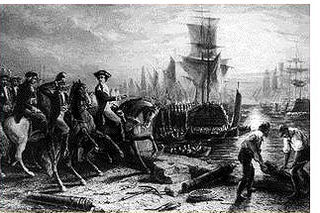
The siege of Boston was the opening phase of the American Revolutionary War. New England militiamen prevented the British Army from moving by land, and it was garrisoned in Boston, Massachusetts Bay. Both sides had to deal with resource, supply, and personnel issues over the course of the siege. British resupply and reinforcement was limited to sea access, which was impeded by American vessels. The British abandoned Boston after 11 months and transferred their troops and equipment to Nova Scotia.
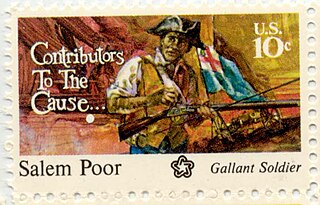
Salem Poor (1747–1802) was an enslaved African-American man who purchased his freedom in 1769, became a soldier in 1775, and rose to fame as a war hero during the American Revolutionary War, particularly in the Battle of Bunker Hill.
South Carolina was outraged over British tax policies in the 1760s that violated what they saw as their constitutional right to "no taxation without representation". Merchants joined the boycott against buying British products. When the London government harshly punished Massachusetts for the Boston Tea Party, South Carolina's leaders joined eleven other colonies in forming the Continental Congress. When the British attacked Lexington and Concord in the spring of 1775 and were beaten back by the Massachusetts Patriots, South Carolina Patriots rallied to support the American Revolution. Loyalists and Patriots of the colony were split by nearly 50/50.
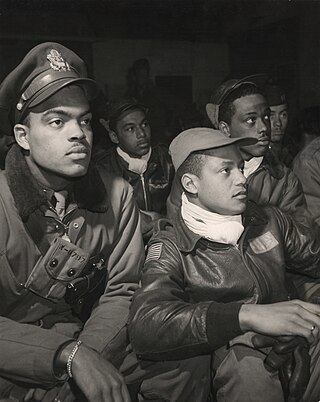
The military history of African Americans spans from the arrival of the first enslaved Africans during the colonial history of the United States to the present day. In every war fought by or within the United States, African Americans participated, including the Revolutionary War, the War of 1812, the Mexican–American War, the Civil War, the Spanish–American War, World War I, World War II, the Korean War, the Vietnam War, the Gulf War, the War in Afghanistan, and the Iraq War.

The 1st Rhode Island Regiment was a regiment in the Continental Army raised in Rhode Island during the American Revolutionary War (1775–83). It was one of the few units in the Continental Army to serve through the entire war, from the siege of Boston to the disbanding of the Continental Army on November 3, 1783.
George Middleton was an African-American Revolutionary War veteran, a Prince Hall Freemason, and a community civil rights campaigner in Massachusetts.

Seymour Burr (1754/1762–1837) was an African-American slave in the Connecticut Colony in the North American British Colonies and United States. Owned by the brother of Colonel Aaron Burr, who was also named Seymour, he was known only as Seymour until he escaped and used the surname Burr to enlist in the British Army in the early days of the American Revolution. The British promised the personal freedom of any African-American slave who enlisted or escaped to fight against the Continental Army, and Burr wanted more than anything to be free. However, he was quickly captured and forcibly returned to his owner.
Barzillai Lew was an African-American soldier who served with distinction during the American Revolutionary War.

In the American Revolution, gaining freedom was the strongest motive for Black enslaved people who joined the Patriot or British armies. It is estimated that 20,000 African Americans joined the British cause, which promised freedom to enslaved people, as Black Loyalists. Around 9,000 African Americans became Black Patriots.

Black Patriots were African Americans who sided with the colonists who opposed British rule during the American Revolution. The term "Black Patriots" includes, but is not limited to, the 5,000 or more African Americans who served in the Continental Army and Patriot militias during the American Revolutionary War.
The Ethiopian Regiment, better known as Lord Dunmore's Ethiopian Regiment, was a British colonial military unit organized during the American Revolution by the Earl of Dunmore, last Royal Governor of Virginia. Composed of former slaves who had escaped from Patriot masters, it was led by British officers and sergeants. The regiment was disbanded in 1776, though many of its soldiers probably went on to serve in other Black Loyalist units.

Associators were members of 17th- and 18th-century volunteer military associations in the British American thirteen colonies and British Colony of Canada. These were more commonly known as Maryland Protestant, Pennsylvania, and American Patriot and British Loyalist colonial militias. But unlike militias, the associator military volunteers were exempt from regular mandatory military service. Other names used to describe associators were "Associations", "Associated", "Refugees", "Volunteers", and "Partisans".
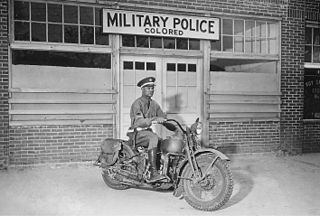
African Americans have served the U.S. military in every war the United States has fought. Formalized discrimination against black people who have served in the U.S. military lasted from its creation during the American Revolutionary War to the end of segregation by President Harry S. Truman's Executive Order 9981 in 1948. Although desegregation within the U.S. military was legally established with President Truman's executive order, full integration of African-American servicemen was not established until 1950 in the Navy and Air Force, 1953 in the Army, and 1960 in the Marine Corps.
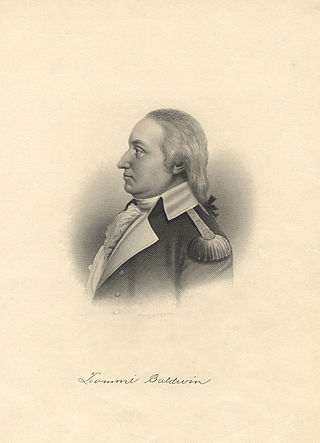
The 26th Continental Regiment was an infantry unit of the Massachusetts Line during the American Revolutionary War. Gerrish's Regiment was raised in the early days of the war, and the regiment underwent name changes as the Continental Army was reorganized in 1776 and 1777. From 1777 onward, the unit was known as the 9th Massachusetts Regiment.
Primus Hall was born a slave. He was the son of Prince Hall, an abolitionist, Revolutionary War soldier and founder of the Prince Hall Freemasonry.
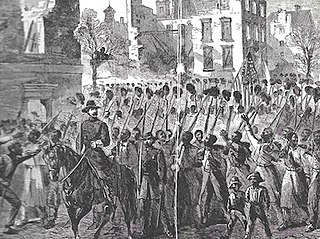
The 55th Massachusetts Infantry Regiment was the sister regiment of the renowned Massachusetts 54th Volunteers during the latter half of the American Civil War. The enactment of the Emancipation Proclamation by United States President Abraham Lincoln on January 1, 1863 had opened the way for the enlistment of free men of color and newly liberated slaves to fight for their freedom within the Union Army. As the ranks of the 54th Massachusetts quickly reached its full complement of recruits, an overflow of colored volunteers continued to pour in from several other states outside Massachusetts — many of whom simply had not arrived in time — prompting Governor John Albion Andrew to authorize yet another regiment of colored soldiers sponsored by the Commonwealth. Lieutenant Colonel Norwood P. Hallowell of the 54th Massachusetts was promoted to colonel and appointed commander of the 55th Massachusetts on May 30, 1863. Five companies of the 55th Massachusetts were mustered into service on May 31; two more companies were mustered in on June 15; and the last three on June 22.
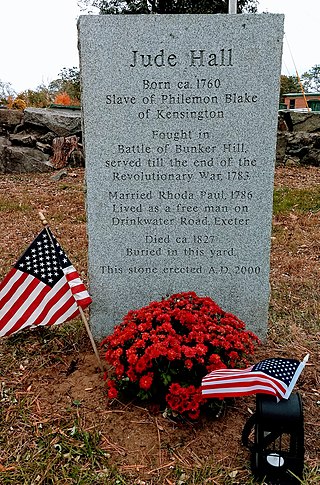
Jude (Judas) Hall was an African-American soldier in the American Revolutionary War. He served from 1775 to 1783, thus earning his freedom from slavery. After the war, he married and settled in Exeter, New Hampshire, where his homestead is still known as Jude's Pond. Three of his children were kidnapped and sold into slavery, and two of his grandsons fought in the American Civil War.
















